This document describes how to rebuild the 1970 - 1976 Mopar 3549947 brass combination brake valves manufactured by Weatherhead and Kelsey-Hayes using a new seal kit available from Muscle Car Research LLC. Tools needed:
|
|
The seal kit provided by Muscle Car Research LLC includes the following parts:
- O-ring seals
- Copper washer
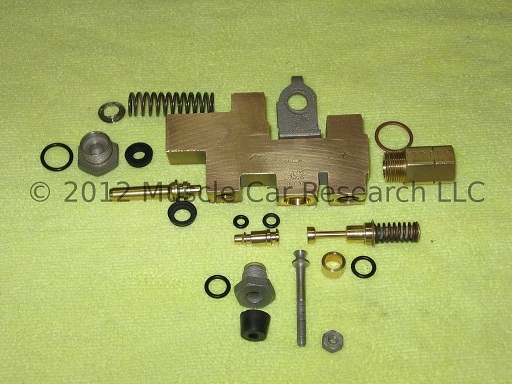
The proportioning portion of the two valves is identical, so let's start there. Install the u-cup seal (slotted-side facing out) and large o-ring on the plug. Install the piston seal on the end of the piston with the flat side on the short end of the piston. Seal installation will be easier of you lubricate the seals with clean brake fluid.
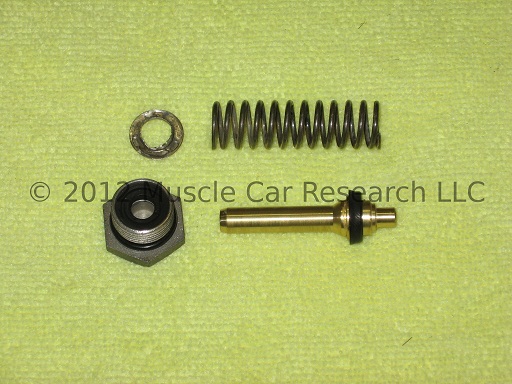
Insert the piston into the valve body. Install the spring and the lay the spring cap on top of the spring.
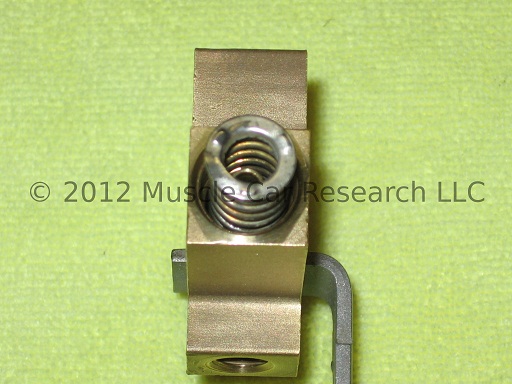
Compress the spring with the plug and screw the plug into the end of the valve body. Be sure to keep the spring cap properly aligned. Tighten the plug just enough to ensure that it won't back out.
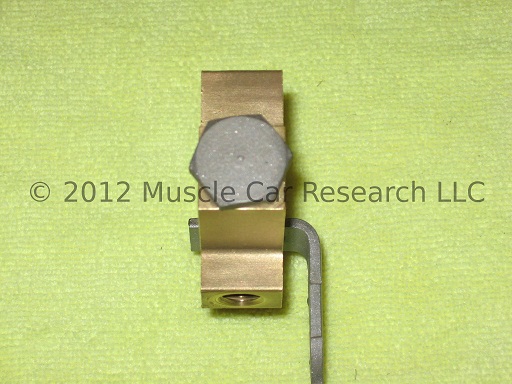
Now turn your attention to the bits that make up the pressure differential valve. We'll start with the Weatherhead parts. The Weatherhead valve uses two pistons, a brass sleeve, and three o-ring seals. Lubricate the seals with clean brake fluid. Install the two smaller o-rings on the small piston. Install the larger o-ring on the larger piston, followed by the brass sleeve. If this large o-ring isn't snug you may have mistaken it for the o-ring used to seal the switch assembly, which is slightly larger. Swap o-rings and try again.
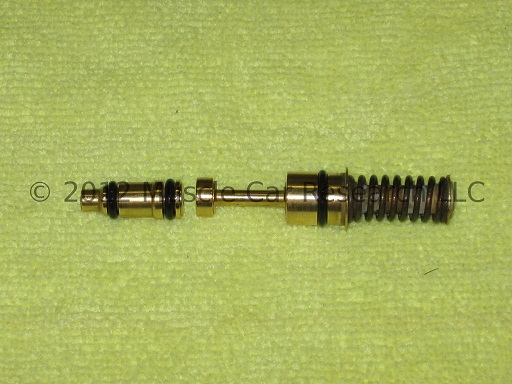
Drop the small piston into the bore, small end first. Don't push! If you can see the slotted end of the piston after installation you put it in backwards. As shown below you should be able to see the flat end of the piston.
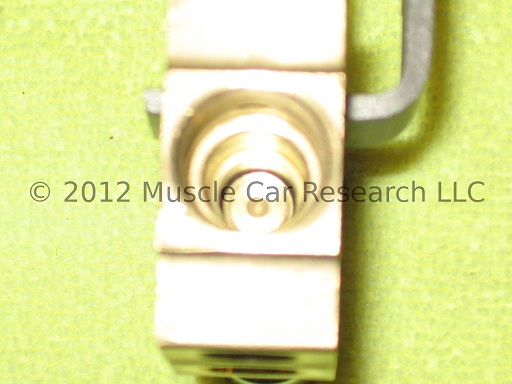
Install the large piston with the spring end towards the outside. It helps to hold the valve with the bore facing down so that you can push the piston up into the valve without letting the brass sleeve fall off. Again, don't push too hard. It's in far enough when additional pressure causes the spring to compress.
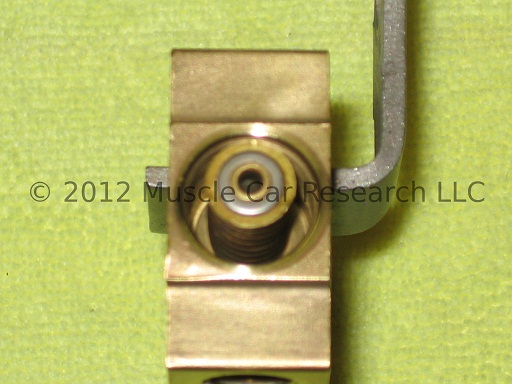
Install the copper washer on the adapter and screw the adapter into the valve body just tight enough to form a seal.
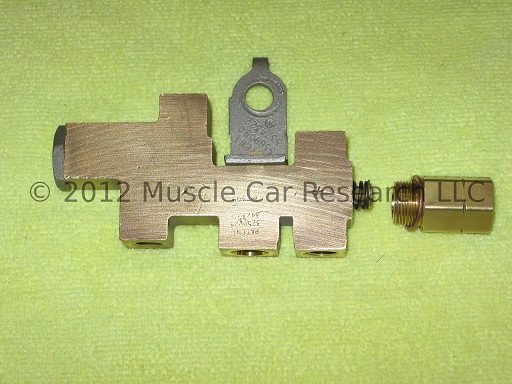
The procedure is a little different with a Kelsey-Hayes valve, which uses a single piston and two springs. The o-ring layout is similar, with three seals of different sizes and a brass sleeve. The larger of these three seals is slightly smaller than the seal used to seal the switch assembly. The copper washer is slightly larger.
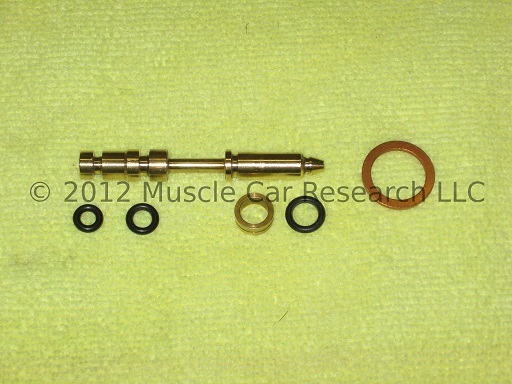
Lubricate the seals with clean brake fluid and install them on the piston. Note that the brass sleeve is installed before the largest of the three o-rings! Note, too, that the springs are of different sizes. The smaller spring goes at the bottom of the bore.
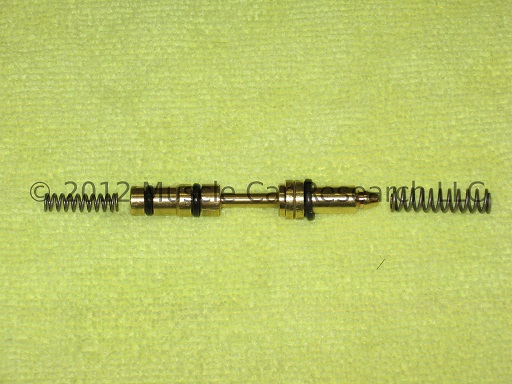
Install the smaller spring into the bore, and then install the piston, flat end first. You should be able to see the pointy end of the piston when it's properly installed.
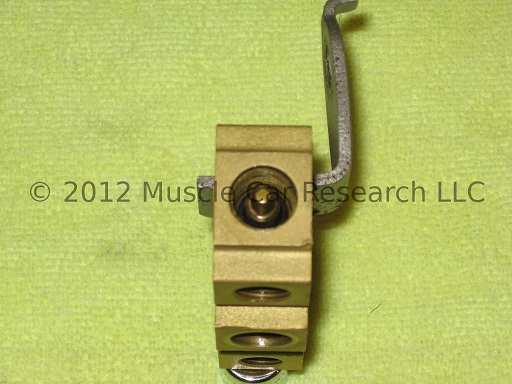
Place the larger spring on the end of the piston. Install the copper washer on the adapter and screw the adapter into the valve body just tight enough to form a seal.
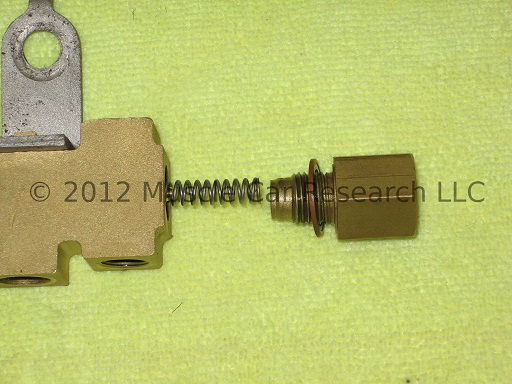
Now it's time to focus on the switch assembly. Make sure that the off-white plastic sleeve and black plastic insulator are in good condition. These two parts are used to keep the terminal from grounding.
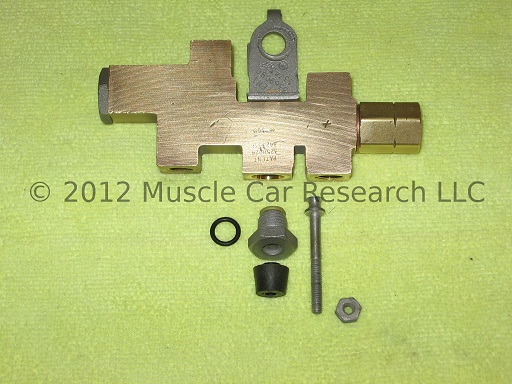
Insert the threaded terminal through the steel body of the switch. Slide the black plastic insulator onto the terminal. Screw the nut onto the terminal and snug it down. Add the o-ring to complete the assembly.
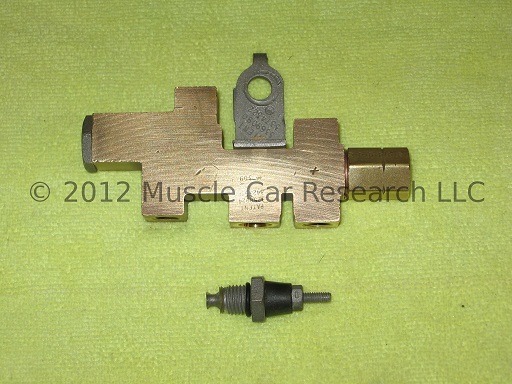
Screw the switch assembly into the valve body to complete the rebuild.
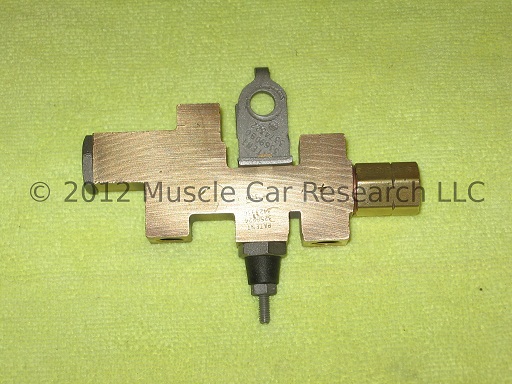
Now you can reinstall the valve in the car and reconnect the brake lines to the valve. Start each line by hand as best you can to ensure that the fittings are threading in straight and smooth. Be careful - it's easy to cross-thread the fittings and damage the soft brass threads. Tighten each fitting with a flare nut wrench. You may need to tighten, loosen, and retighten each fitting multiple times to obtain a leak-free seal. Add brake fluid, bleed the brakes, and check for leaks.
The bracket used on this valve was originally plated with a zinc dichromate or yellow cadmium finish. If you're rebuilding the valve for use on a concours show car you will want to remove the bracket from the valve by carefully reforming the staked brass tab that holds the bracket in place. After plating, the bracket can be reinstalled by restaking the brass tab with a ball peen hammer.
- Log in to post comments
